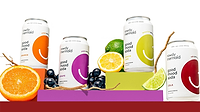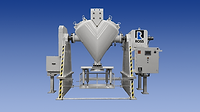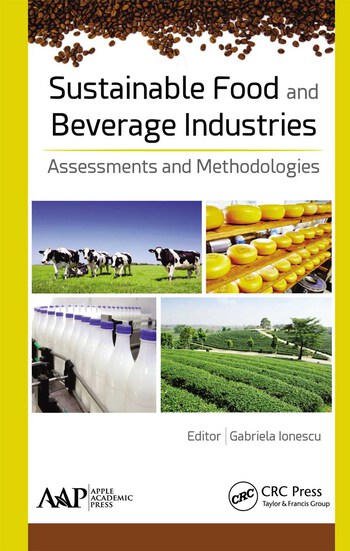Beverage-makers explore ways to deliver on fortification trends
Consumers continue to expect more from their beverages

Image courtesy of Getty Images
In the 2012 musical comedy “Pitch Perfect,” moody Beca (Anna Kendrick) joins an a cappella group, The Barden Bellas, to make friends during her freshman year of college. The Bellas often perform outdated songs and dress like flight attendants, un-ironically. Beca shakes things up with the group, giving the Bellas a new look and a new sound to win an a cappella competition.
Like Beca did with The Barden Bellas, consumer trends have forced beverage-makers to make changes to traditional product offerings.
Carla Saunders, senior marketing manager for high-intensity sweeteners at Cargill, Minneapolis, says that, like most segments in the food and beverage industry, health and wellness trends continue to influence new product development — mainly due to lasting impacts from the pandemic.
“This was certainly evident at SupplySide West, where fortified beverages touting health benefits were everywhere, from functional sodas packed with vitamins and minerals, to powdered drink mixes leaning on adaptogens and botanicals for better sleep and mood,” she explains. “While these beverages may be packed [with] nutritional positives, their health-conscious consumer base is keen to limited added sugars.”

Saunders notes that consumers prioritize sugar reduction and view it as a way to make food and beverages healthier. She suggests that these preferences can leave beverage brands in a bind.
“ … Consumers may be drawn to formulations that boast vitamins, minerals, botanicals and adaptogens, but those functional ingredients often come with off-flavors that can be difficult to hide,” Saunders adds.
Micah Greenhill, senior marketing director for beverages at ADM, Chicago, points out that shoppers are always looking for new ways to support their health and well-being. And not only are consumers concerned with their short-term health, but also long-term health.
“Consumers also recognize the physical, emotional and mental well-being are all interconnected, and they demand tailored support that can help reach their overarching wellness goals,” he says. “Concurrently, modern consumers are now expecting their foods and beverages to be functional and better for them as a baseline.”
He notes that shifts in consumer behavior have caused beverage brands to find new ways to deliver on fortification and personalization.
“From ready-to-drink (RTD) shakes, teas, energy drinks to sparkling waters, along with science-backed ingredients and solutions, manufacturers have an opportunity to provide nutritious, tailored options in a variety of formats,” Greenhill adds.
Embracing the trends
Beverage-makers are addressing these consumer trends through new product innovation.
Cargill’s Saunders notes that energy drinks are one of the only beverage segments “delivering steady growth” in both dollar and unit volume. She adds that there has been a lot of innovation in that space.
“Some of the strongest growth is coming from the reduced-sugar space,” Saunders says. “While full-caloric options still account for the majority of sales, the smaller-but-rapidly-growing reduced sugar/calories sub-segment is delivering staggering numbers, up to 30 percentage points in both dollar and unit volume over the last 52 weeks, according to Nielsen data.”
Saunders adds that another area of innovation centers on product formats.
“In particular, we’re seeing more stick packs, with newer brands leading the way,” she explains. “Targeting everything from hydration to energy, formulators are reinvigorating the powdered drink mix space.”
As for which ingredients are in-demand for beverage fortification, ADM’s Greenhill notes that minerals like zinc and vitamins B, C, D and E are “in the limelight” — mainly due to their connections to immune function support, skin health and metabolic health. He notes that isotonic properties also are in high demand, “especially as more consumers seek rapid rehydration throughout the day.”
“Today’s consumers also look for simple, recognizable ingredients, especially in their better-for-you purchases,” Greenhill says. “Botanical extracts can check these boxes, while supporting the desire for functionality. Research shows that consumers associated botanical ingredients with other reputable qualities, including natural, better-for-me and trustworthy.”
Greenhill goes on to note that ADM helps brands tap into its portfolio of botanical extracts, which includes acerola, guarana, green rooibos and grape seed extract.
Vaughn DuBow, ADM’s global director of marketing for microbiome solutions, also has made observations of consumer trends.
“With over half of global consumers perceiving a connection between the function of bacteria in the gut to wider aspects of well-being, shoppers are excited to see prebiotics, probiotics and postbiotics in their beverage purchases,” DuBow says. “Through our robust microbial strains, we help beverage-makers incorporate these solutions.”
DuBow specifically calls out ADM’s heat-treated postbiotic versions of BPL1 and ES1, along with the spore-forming DE111. The postbiotics can withstand harsh formulation environments, which he says make them “ideal for inclusion in beverage formulations that may undergo high heat.”
He notes that such solutions have been studied to support various aspects of well-being.
“Our BPL1 probiotic and postbiotic target factors relevant to metabolic health,” DuBow explains. “DE111 is backed by numerous studies showing that it supports factors relevant to digestive health and immune function. Studies also show that ES1 probiotic and postbiotic have the potential to support gastrointestinal health, and it may support a healthy gut, in both non-gluten-sensitive and gluten-sensitive individuals.”
DuBow goes on to say that prebiotic fiber has remained a key ingredient in food and beverage fortification.
ADM/Matsutani LLC’s Fibersol is a prebiotic daily fiber that “helps promote the growth of gut microbes” that have been positively associated with digestive health, he explains. “Fibersol supports the fortification of beverages without disrupting the sensory experience, as it’s neutral in flavor and color and has low viscosity, heat-, acid-, shear-, freeze- and thaw-stability, water solubility and clarity.”
Cargill’s Saunders notes that protein claims “continue to drive the bus” in regard to in-demand ingredients for beverage fortification, as consumers continue to consume more protein.
“Other top nutrients include fiber, vitamin D, calcium and vitamin B12,” she says. “However, alongside these familiar choices, we’re also seeing heightened interest in newer functional ingredients, including ‘biotics, adaptogens, botanicals and nootropics — especially as consumers look to food and beverages to support not just their physical health, but also for mental and emotional well-being.”
Dr. Janice Johnson, food technical adviser at Cargill, adds that there has been a heightened focus on hydration. This shift has prompted brands to offer products fortified with electrolytes such as potassium and sodium, she says.

“These minerals are essential nutrients for humans and vital electrolytes for athletes,” Johnson explains. “Sodium helps maintain fluid balance in the blood and cells, and functions in nerve impulse transmission, muscle contraction and much more. Potassium, an under-consumed nutrient for most individuals, is an electrolyte that plays a crucial role in hydration, muscle contraction and heart function.”
Cargill offers both of these electrolytes — including sea salt and pink Himalayan salt — which appeals to label-conscious consumers, Johnson suggests.
Getting past problems and predicting popularity
As beverage-makers work to meet consumer demands of fortification, experts say it is no easy feat.
ADM’s Greenhill explains how certain extracts can cause off-notes or throw off the appearance and texture of beverages.
“If beverage formulations have multiple functional ingredients, the ingredient interactions may cause separation, sedimentation, flocculation or ringing,” he says. “Stability and shelf life must also be taken into consideration, as vitamins and minerals may degrade over time from exposure to water, heat, light and oxygen.”
Greenhill notes that the company offers a portfolio of extracts and powders that remain stable in various formulation settings, thanks to ADM’s formulation expertise and quality solutions.
Cargill’s Saunders notes that taste challenges are “a common theme” when it comes to beverage fortification. To combat this, many beverage-makers turn to sugar, which is a turn-off for present-day consumers, she says.
“Fortunately, advances around high-intensity sweeteners offer a clear pathway forward,” Saunders states. “For example, our newest sweetener system, EverSweet stevia sweetener + ClearFlo natural flavor, can help address many of the flavor challenges associated with performance beverages.”
Saunders goes on to say that “the umbrella over everything is good taste.” Even if a drink is packed with all the vitamins, minerals and beneficial ingredients, it won’t sit well with consumers if it doesn’t taste good.
Going forward, Saunders anticipates that more fortified beverages will include mushrooms. She suspects that brands will incorporate “functional fungi” into teas, plant-based milks and other elixirs.
“‘Natural’ energy sources are another ingredient segment showing lots of growth potential,” she says.
Saunders expects an array of natural energy ingredients, like green tea extract and yerba mate, will be used by brands to meet demand for “clean” energy.
Looking for a reprint of this article?
From high-res PDFs to custom plaques, order your copy today!









